- Home
- Antonia Fraser
Gunpowder Plots Page 3
Gunpowder Plots Read online
Page 3
March 1605 marked the beginning of a new phase of the plot, when Robert Wintour (Tom’s brother), Kit Wright (Jack’s brother) and John Grant (the Wintours’ brother-in-law) were let into the secret. Then, just at the point when their tunnel encountered the redoubtable stone foundations of the Lords’ chamber, a new opportunity arose. The street-level chamber or vault between the tunnel and the Lords’ first-floor meeting place was used for coal storage, and unexpectedly became available for rent. A lease was secured on 25 March for £4 per year. The chamber formed part of the warren of medieval kitchen buildings of the original palace of Westminster, abandoned as a royal family residence after a disastrous fire in 1512. It made the task far easier since they could stack the gunpowder directly under the House of Lords. Once again, they broke off for the summer and Fawkes went back to Flanders. Catesby, the paymaster for the whole venture, surveyed his finances on a visit to Bath, where he met Percy. It was agreed he could recruit some others to help bear the costs. So Ambrose Rookwood, Sir Everard Digby and Francis Tresham joined the inner circle, although Tresham was so agitated on hearing what was planned that he tried to bribe Catesby to abandon the plot. On 3 October 1605 Parliament was prorogued again until 5 November. In the entourage of Lord Monteagle, Tom Wintour attended the prorogation ceremony in the Lords, where he must have reflected that, if the gunpowder secretly stored below went off, he would die in the company of a large number of noblemen and Privy Councillors.
By late October the plotters were congregating in London. Wintour and Fawkes brought in some fresh gunpowder in case the original stores were damp, and everything seemed to be in place. However, on 26 October 1605, just as four of the leading lords of the Privy Council – the earls of Salisbury, Suffolk, Northampton and Worcester – were sitting down for a convivial supper at Whitehall, a letter was brought in to them by Lord Monteagle. An erstwhile Catholic and a follower of Essex,
Monteagle had been helped out of trouble in 1601 by Robert Cecil (created Viscount Cranborne for his services in crafting the peace with Spain, then earl of Salisbury in May 1605). Monteagle publicly emphasized his new-found Protestantism, but was intimately linked to Catholic circles by his marriage to a sister of Francis Tresham and by his sister Mary’s marriage to the Worcestershire recusant Thomas Habington of Hindlip. Even worse, Tom Wintour, at the heart of the plot, acted as Monteagle’s secretary. In summer 1605 Lord Salisbury was already receiving disturbing rumours of a Catholic conspiracy in the making. Much comment was aroused by a very public pilgrimage in August 1605 to Holywell, the old shrine of St Winifrid in north Wales, led by Fr. Henry Garnet, Superior of the English Jesuits. But as yet Salisbury had few specific pieces of information. The letter brought by Monteagle (and most probably covertly written by him, using information he had gathered from his Catholic contacts) included a warning to stay away – ‘devise some excuse to shift of your attendance at this Parliament’ – since ‘a terrible blow’ would be struck. Salisbury probably suspected the worst at that point, but it was agreed that no immediate measures should be taken until the king returned from his hunting. However, Salisbury’s intelligencer George Southwick redoubled his efforts, diligently riding around for further information.
On Friday 1 November, Salisbury placed the Monteagle letter before the king in his gallery at Whitehall. James thought of his father Lord Darnley’s murder in the deliberate explosion at Kirk o’ Field in Edinburgh in 1567, and wondered if, once again, gunpowder was involved. On Saturday the Privy Council decided that Lord Chamberlain Suffolk, in charge of preparing the old palace of Westminster for the Parliament, should search both above and below the chambers used for the meeting places. Meanwhile, on Sunday 27 October Catesby learned of the Monteagle letter and feared their plot was betrayed. He sent Fawkes to check their rented chamber, but was reassured when he reported that nothing had been touched. Both Catesby and Tom Wintour suspected Francis Tresham of betraying them, but his vehement oaths managed to convince them of his innocence. Reinforced by Thomas Percy, who agreed that they should see their plan through, Catesby refused to back down. On 4 November Percy rode to Syon House on the Thames to see his kinsman Northumberland, fishing for anything suspicious that might indicate the earl had heard something of the plot. Percy sensed he knew nothing and did not warn Northumberland to stay away from the state opening. Later on the same day, Fawkes went to the vault with a slow match and a watch given him by Percy to check the time. Astonishingly, Lord Chamberlain Suffolk, making his rounds of the palace accompanied by Lord Monteagle among others, went into the chamber and encountered Fawkes, whom he took to be some sort of servant. Suffolk noted the large pile of brushwood and faggots (concealing the gunpowder) but was satisfied when told it belonged to the tenant of the house, Mr Thomas Percy of the gentleman pensioners. The noblemen proceeded on their tour of inspection.
On their return to court, Monteagle expressed some surprise that Thomas Percy should be renting a vault in Westminster when he had his own house in London. He also commented that Percy was a Catholic, surmising that Percy might well be the author of the anonymous warning letter, since he and Monteagle had been friends. The king then ordered a further search of the cellars and undercrofts of the old palace, this time undertaken by Sir Thomas Knyvet, a Westminster Justice of the Peace and a member of the king’s privy chamber. Knyvet was also an old friend of Salisbury, with whom he had sat for the borough of Westminster in the 1584 Parliament, the
ARREST OF GUY FAWKES.
young Cecil’s first session. In order not to raise any alert, it was given out that they were looking for hangings that had been embezzled from the stores. About midnight on 4 November they reached Fawkes in the vault, booted and fully clothed. Knyvet had him arrested, and his men found the gunpowder, packed in thirty-six barrels, under the woodpile. Fawkes gave his name as John Johnson, a servant of Thomas Percy.
The plotters intended that on the morning of Tuesday 5 November Fawkes would light the length of slow match as soon as the king came into the Lords (presumably by hearing the noise overhead) and get away across the Thames before the explosion. Meanwhile Sir Everard Digby and his servants established themselves at the Red Lion in Dunchurch, under the guise of a hunting party. As soon as he learned of the plot’s success, Catesby would leave London for the Midlands where he would meet with Digby to mastermind the Catholic rising that formed the next stage of the plot. They would seize Princess Elizabeth from Coombe Abbey near Rugby, the home of her governor, Lord Harington, and proclaim her queen. But little of this had been fully worked out: as the Jesuit Fr. Oswald Tesimond later commented, ‘They left all at random.’ Once the news of Fawkes’s arrest was out, Catesby, Percy and John Wright fled north, meeting the assembled Catholic gentry at Dunchurch that evening. One of the servants at the Red Lion later recalled hearing a man speak out of a casement window: ‘I doubt wee are all betrayde.’ The majority of the huntsmen melted away, refusing to involve themselves in the conspiracy.
The ringleaders were not ready to give in. Late at night on 5 November they raided the stables of Warwick Castle for fresh horses, then spent two days moving from one Catholic ‘safe house’ to another, including Huddington Grange, the Wintour home, where they received communion. No new supporters joined them and the recusant Thomas Habington of Hindlip, married to Monteagle’s sister, refused them shelter. On 7 November they reached Holbeach House in Staffordshire, home of one of the Dunchurch hunting party. Utterly exhausted by strain, fear and their hours of riding, the plotters carelessly spread out before the fire some damp gunpowder taken from one of the houses in which they had rested. It exploded, burning Catesby and Rookwood and blinding John Grant. They already knew that they were being followed by government forces, and the terrible, coincidental explosion convinced them that they had lost their great gamble. Morale collapsed. Jack Wright suggested to Catesby that they should blow themselves up with the remaining gunpowder. Tom Wintour, who had been out of the house trying in vain to raise some Catholic help, asked on his
return what they would do. Catesby, the Wright brothers, Thomas Percy and the rest replied unhesitatingly, ‘We mean here to die.’ Wintour answered that he would do the same.
The following morning the sheriff of Worcestershire and his posse of at least two hundred men arrived outside Holbeach. In the exchange of fire, Jack and Kit Wright were killed. Thomas Percy and Robert Catesby were brought down by one shot that passed through both of them. Catesby managed to crawl back into the house, where he found a picture of the Virgin Mary and died clutching it. From beginning to end, the plot was all his work. Courageous, affluent and ruthless, he had used his forceful personality to bring others in, and exercised a compelling hold over them. Although Catesby paid occasional lip-service to the idea that they should save as many as possible of the crypto-Catholic noblemen who would attend the fatal state opening, he despised the men who had offered so little leadership to their beleaguered co-religionists. To Catesby, the peerage consisted mostly of ‘atheists fools and cowards’, so he did not concern himself with their fate. He never showed the slightest remorse for what he had planned to do.
Tom Wintour had wanted to die at Holbeach, but he was captured, shot in his right arm and unable to defend himself. Also captured were the injured Ambrose Rookwood and the severely burned John Grant. These survivors were taken back to London, where others including Sir Everard Digby and Francis Tresham later joined them in the Tower. By 9 November Fawkes had been tortured and given six statements on the conspiracy, each fuller than the last. He reiterated that intense dislike of the Scots which had been evident on his visit to Spain. The king had at once proposed questions to be put to Fawkes, including a query about the authorship of a hostile libel that asserted that James would die for taking the unpopular title of ‘King of Great Britain’. He immediately leaped to the conclusion that anti-Scots hatred was at the heart of the plot, and authorized ‘the gentler tortures’ first, with an escalation if necessary. However, Fawkes and Wintour were now the only survivors of the original plotters and their testimony would be vital. The shootout at Holbeach saved the government most of the task of hunting down survivors, as well as demonstrating beyond doubt that these were the guilty men. The Privy Council, initially so baffled by events that they sought help from the celebrity astrologer Simon Foreman, could feel by 9 November that they were back in control. The king’s speech that day at the prorogation of Parliament was gracious, emphasizing that he believed the plot to be the work of a few fanatics rather than the whole Catholic community. He also exonerated Catholic monarchs abroad. He gave thanks that God had delivered them all from ‘a roaring, nay a thundering sin of fire and brimstone’.
There was still unfinished business to attend to, and Northumberland was unable to rid himself of the shadow cast by his cousin Thomas Percy. The Privy Council suspected that
the plotters intended to use Northumberland as Protector, to guide Princess Elizabeth through her minority. As a result, the earl languished for years in the Tower, albeit in comfortable quarters. The surviving plotters – Fawkes, Tom and Robert Wintour, Everard Digby, John Grant, Robert Keyes, Ambrose Rookwood and Catesby’s servant Thomas Bates – were tried on 27 January 1606, found guilty and executed over the next few days. The government was also keen to implicate the Catholic priests, and here the confession of Catesby’s servant Thomas Bates proved invaluable. Before going to his own death, Bates incriminated Fr. John Gerard, who had said Mass at the initial meeting of May 1604, as well as Fr. Oswald Tesimond and above all Fr. Henry Garnet. In July 1605 Catesby had suffered a rare spasm of moral unease, and in confession revealed something of his plans to Tesimond. In great distress of mind Tesimond passed the information on to Garnet. Neither had revealed the plot to the authorities, although they tried to damp down any treasonable activity among Catholics whom they knew well. Gerard and Tesimond got away from England just in time, but Garnet was hunted down and tried on 28 March 1606. The elderly priest was hanged, drawn and quartered in May, but the spectacle seems to have dismayed those present. No one cried out the customary ‘God save the king’.
On the evening of 5 November 1605, with Fawkes in custody and the plot foiled, there was a great outburst of bell-ringing. In addition, the inhabitants of London were encouraged to light bonfires to celebrate the providential deliverance of the king and his nobility. An Act was passed in 1606 for an annual public thanksgiving with appropriate sermons, and the day was kept as a religious occasion rather than a rambunctious social event. It was only in the later seventeenth century that effigies of the Pope were burned on the bonfires, and ‘the guy’, after Fawkes, appeared in the eighteenth century.
The long-lasting impact of the Gunpowder Plot must be put down in the first place to the grand scale of the intended atrocity. Unlike earlier Catholic plots against Queen Elizabeth herself, the Gunpowder Plot would have killed hundreds if not thousands, not only in the House of Lords but in the great fire which would surely have swept through the decrepit palace and out into the suburb of Westminster. Perhaps the second reason why the commemoration survived was simply that the story was so chillingly dramatic. More recently it has come to speak to our own ambiguous times. We are all too familiar with terrorism, and there is no doubt that, even though the word was not known in 1605, Protestant contemporaries (and many Catholics) regarded the plotters with all the horror reserved for murderous fanatics. Yet they were also tragic figures, remarkably brave and deeply religious men drawn into a doubtful cause. Led by the charismatic figure of Robert Catesby, they were driven by sustained state persecution to see themselves as heroes freeing their oppressed people. The final straw was the deliberately exploitative way in which King James first raised English Catholic hopes and then dashed them. To men like Robert Catesby, Thomas Percy, Guy Fawkes and Tom Wintour, by spring 1604 it was clear that they must either content themselves with idle talk, or take some action. The rest is history.
CHAPTER TWO
The Gunpowder Plot Succeeds
ANTONIA FRASER
The coronation of Queen Elizabeth II took place on a fine, fair day in January 1606 – the 15th to be precise, in honour of her glorious predecessor, the first Elizabeth, who had been crowned on that very day in 1559. This was not the only deliberate echo of that previous sacred festivity. Elizabeth I, who once said that ‘In pompous ceremonies a secret of government doth much consist, for that the people are both naturally taken and help with exterior shows’, would have understood the reasoning. At the same time she would have utterly abhorred the circumstances which had brought about this new coronation, less than three years after the accession to the throne of Elizabeth II’s father, James I.
So the young Elizabeth Stuart, eldest daughter of King James and Queen Anne, had spent three nights before her coronation in the Tower as was customary for sovereigns, and as her father (and the great Elizabeth) had done in their time. She had then processed to Westminster Abbey through streets with fresh gravel flung down, where the windows were hung with banners. A canopy was carried over her head and an enormous mantle made from twenty-five yards of gold and silver tissue was wrapped around her. At the age of nine and a half, Elizabeth II might have been in danger of being dwarfed by her imposing surroundings. Fortunately she was tall for her age (taking after her late mother, or perhaps her grandmother, Mary Queen of
Shaded circle gives approximate blast area.
Scots), her appearance further enhanced by the dignity of her bearing, on which all commented. Elizabeth II was already showing signs of great beauty with her huge heavy-lidded hazel eyes and her delicate oval face; that was something which certainly excited the French ambassador. He was not used to a matrimonial prize such as this unmarried queen being, in his own words, so ‘very well bred and handsome’.
The other aspect of the new queen’s appearance noted by all the spectators both along the route and in the Abbey itself – but not mentioned publicly – was her extraordinary air of melancholy. It did not pass during the crowning itself, when it was as th
ough the actual crown was weighing her head down; and it did not pass when the Lord Protector, Henry Percy, earl of Northumberland, escorted her back down the aisle of the Abbey. Yet her composure remained complete; it was with an air of philosophic sadness rather than tempestuous grief that Elizabeth II accepted her destiny. She showed only one moment of animation, although so fleeting that many missed it, and that was in response to a shout from someone in the crowd outside the Abbey. Instead of the huzzas, the cheers and the ‘Vivat Elizabethas’ so carefully orchestrated by the new government, a voice had the temerity to call out: ‘Long live the Protestant king over the border, long live King Charles.’ Perhaps a tear shone in the new queen’s eye. But Elizabeth II quickly recovered her melancholy composure; there was a scuffle and the audacious dissenter was dragged away by soldiers. The usual penalties for anti-government protest, the stocks and mutilation of the ears, were no doubt exacted.

 Warrior Queens
Warrior Queens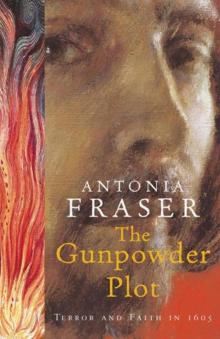 The Gunpowder Plot
The Gunpowder Plot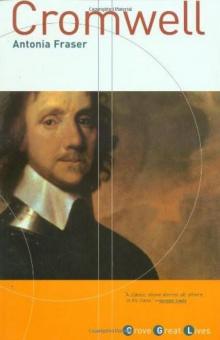 Cromwell
Cromwell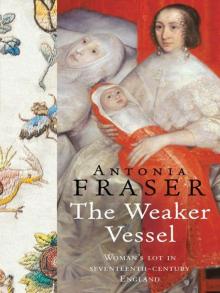 The Weaker Vessel: Women's Lot in Seventeenth-Century England
The Weaker Vessel: Women's Lot in Seventeenth-Century England Marie Antoinette: The Journey
Marie Antoinette: The Journey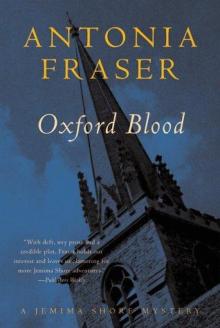 Oxford Blood
Oxford Blood Your Royal Hostage
Your Royal Hostage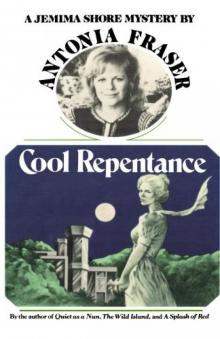 Cool Repentance
Cool Repentance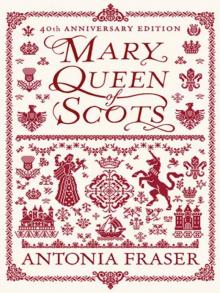 Mary Queen of Scots
Mary Queen of Scots Political Death
Political Death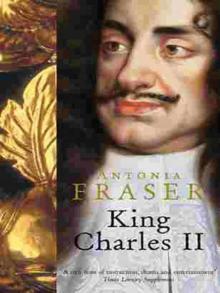 Royal Charles: Charles II and the Restoration
Royal Charles: Charles II and the Restoration My History: A Memoir of Growing Up
My History: A Memoir of Growing Up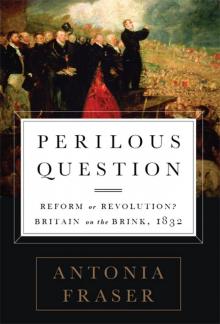 Perilous Question: Reform or Revolution? Britain on the Brink, 1832
Perilous Question: Reform or Revolution? Britain on the Brink, 1832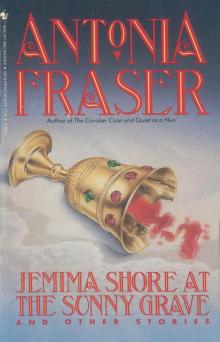 Jemima Shore at the Sunny Grave
Jemima Shore at the Sunny Grave A Splash of Red
A Splash of Red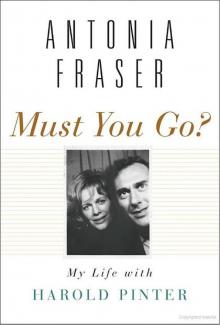 Must You Go?: My Life With Harold Pinter
Must You Go?: My Life With Harold Pinter Love and Louis XIV: The Women in the Life of the Sun King
Love and Louis XIV: The Women in the Life of the Sun King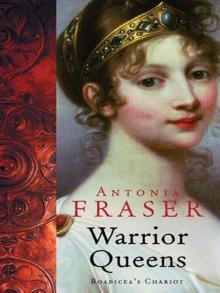 The Warrior Queens
The Warrior Queens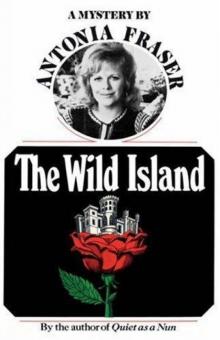 The Wild Island
The Wild Island Quiet as a Nun
Quiet as a Nun Perilous Question
Perilous Question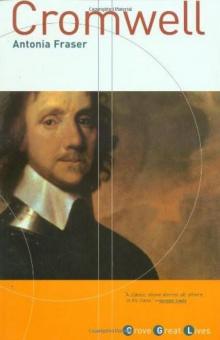 Cromwell, the Lord Protector
Cromwell, the Lord Protector Gunpowder Plots
Gunpowder Plots The Wild Island - Jemima Shore 02
The Wild Island - Jemima Shore 02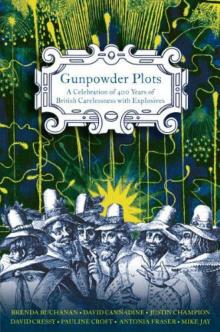 Gunpowder Plots: A Celebration of 400 Years of Bonfire Night
Gunpowder Plots: A Celebration of 400 Years of Bonfire Night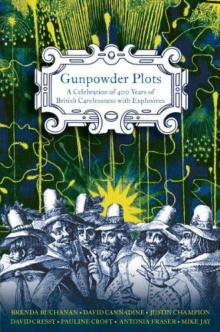 Gunpowder Plots_A Celebration of 400 Years of Bonfire Night
Gunpowder Plots_A Celebration of 400 Years of Bonfire Night Marie Antoinette
Marie Antoinette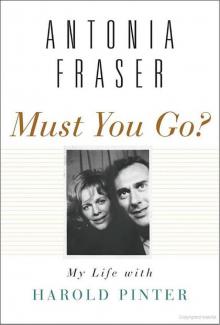 Must You Go?
Must You Go? My History
My History